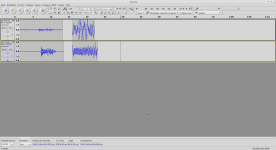High gain mics are used for all sorts of things, not just movies and such. But not really the point. Without knowing the exact gain of the speaker amplifiers, attenuation in cables and connections, the distortion added by those amps, the speaker characteristics, or even the room acoustics, you cannot isolate any distortion or noise or gain or attenuation to just the microphone.
Noise is not the only quality characteristic of a microphone. I note one of the easy ways to counter noise is to just speak more loudly into the mic so your signal is way above any introduced noise. That's actually the primary principle behind Dolby noise reduction.
For the record (no pun intended), I am not a sound engineer either. But I am a certified electronics technician who maintained USAF air traffic control radio systems as my job, and audiophile quality consumer electronics as my hobby for 20+ years . To properly measure noise, distortion, sound pressure levels, S/N and S/N + N levels, you need reference standard audio generators, oscilloscope, reference standard speakers and microphones, all calibrated to yet another laboratory reference standard.
And another thing. It is very common to run through a total sound system calibration process and get a near perfectly "flat" frequency response from source to speaker output, and have it sound lousy to our ears. That's because human hearing is fickle and it is common to add "equalizer" effects to have reproduced audio sound "pleasing" to our ears.
